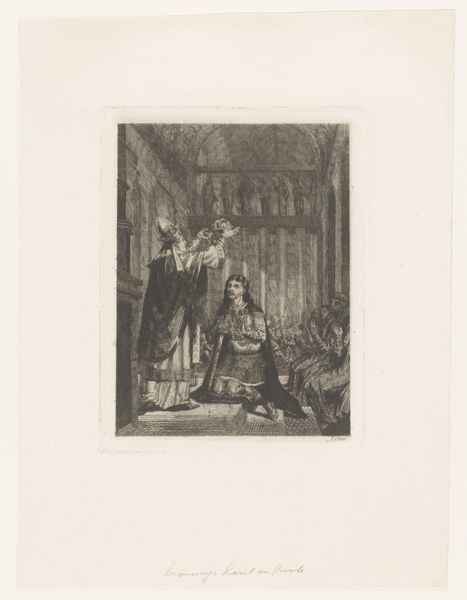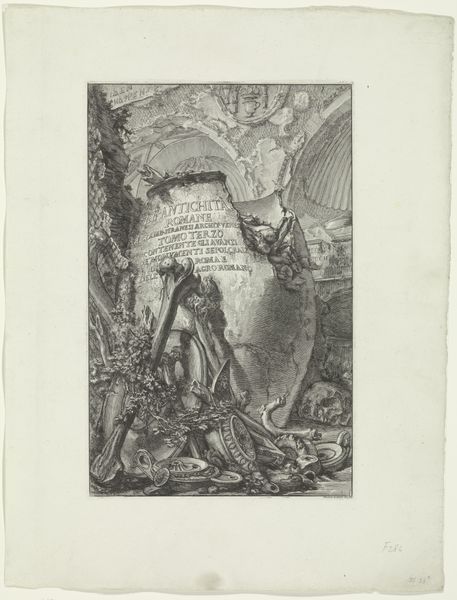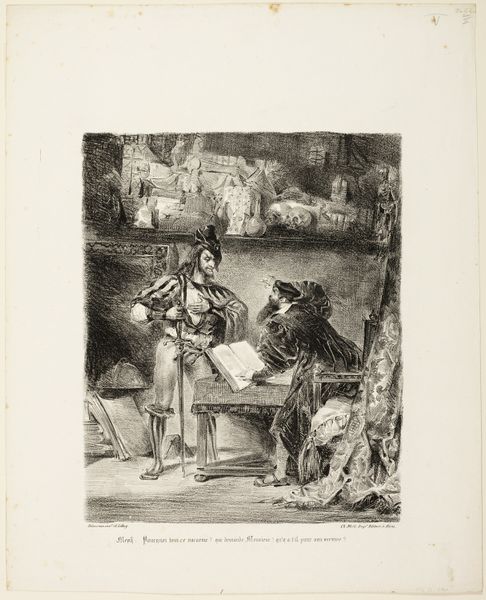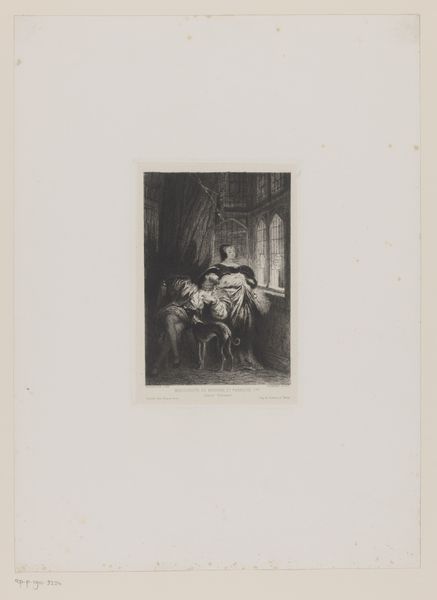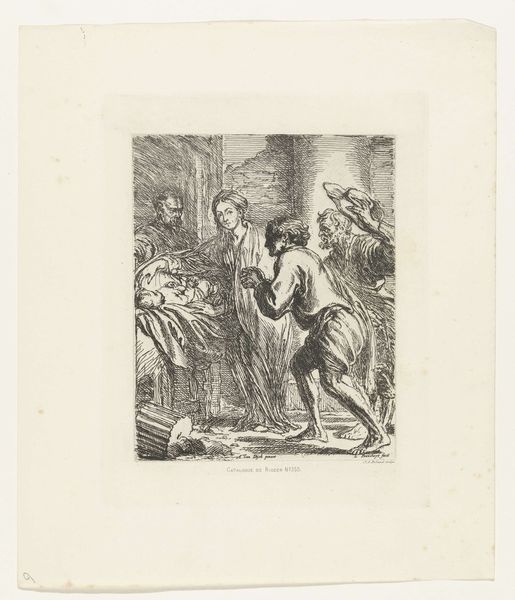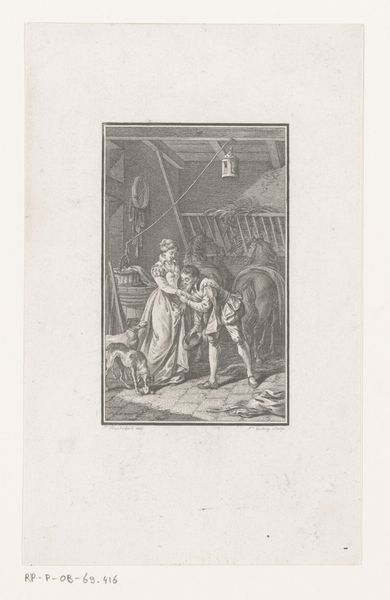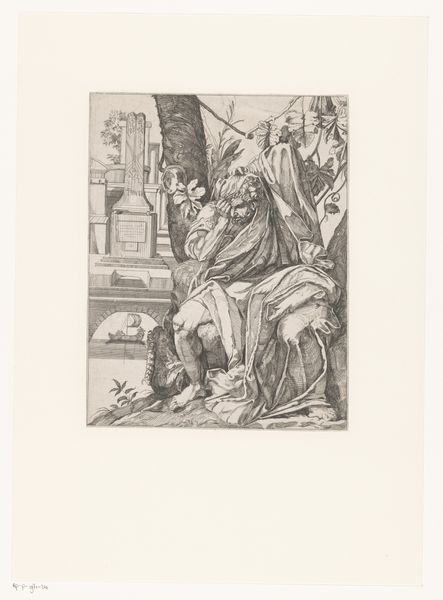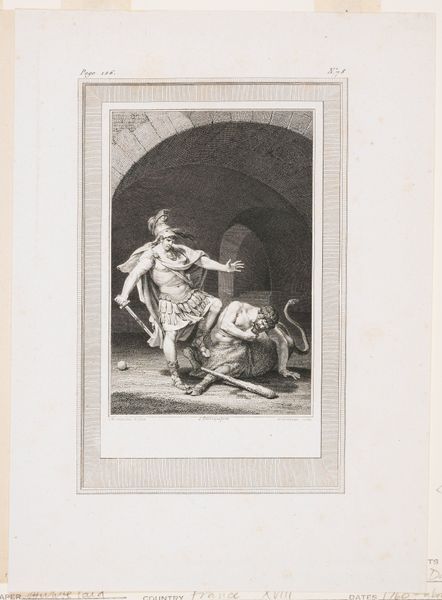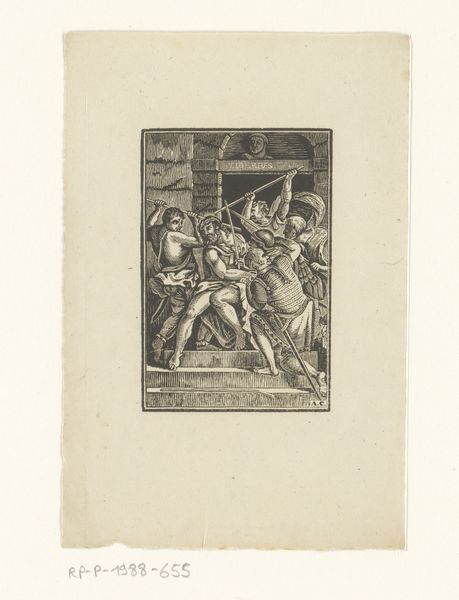
"Owake! what ho! Brabantio! thieves! thieves!": plate 1 from Othello (Act 1, Scene 1) 1844
0:00
0:00
drawing, print, etching
#
drawing
# print
#
etching
#
figuration
#
men
#
history-painting
Dimensions: plate: 14 5/8 x 10 5/8 in. (37.2 x 27 cm) image: 12 13/16 x 9 5/16 in. (32.5 x 23.7 cm)
Copyright: Public Domain
Editor: This etching by Théodore Chassériau from 1844, titled "Owake! what ho! Brabantio! thieves! thieves!": plate 1 from Othello (Act 1, Scene 1), plunges us into a tense night scene. I'm immediately struck by the contrast between the alarmed figures below and the seemingly oblivious figure on the balcony. How do you see this artwork in the context of 19th-century artistic representations of Shakespeare? Curator: Well, it's interesting that Chassériau chose this particular moment, the very beginning of the play. It highlights disruption and anxieties about social order. Brabantio, a Venetian senator, is being warned that his daughter has eloped with Othello, a Moor. Chassériau captures this clash of cultures and generations, but also, and crucially, the patriarchal anxieties that fuel much of the drama in the play, wouldn't you agree? Notice how Brabantio is literally elevated, out of reach. It is this disruption of societal norms that leads to disorder and in that way, a social unease and re-evaluation is represented by Chasseriau here. What effect do you think it might have had on its contemporary audiences? Editor: That’s a great point. The visual hierarchy definitely emphasizes Brabantio's societal position, now under threat. Perhaps the audience would be invited to question those societal norms? I'm not sure. Curator: Possibly, though I think its more that a sense of instability of hierarchies comes into question, not the dissolution of. It makes the viewer consider the ways that authority is both challenged and upheld. Does focusing on this specific dramatic moment perhaps reflect a broader interest in theatricality and its social function during this period? Editor: That's really insightful! Thinking about the social function adds another layer to understanding Chassériau's intent. I appreciate how you’ve helped me see this etching as a reflection of its time, not just a literal depiction of Shakespeare.
Comments
No comments
Be the first to comment and join the conversation on the ultimate creative platform.
